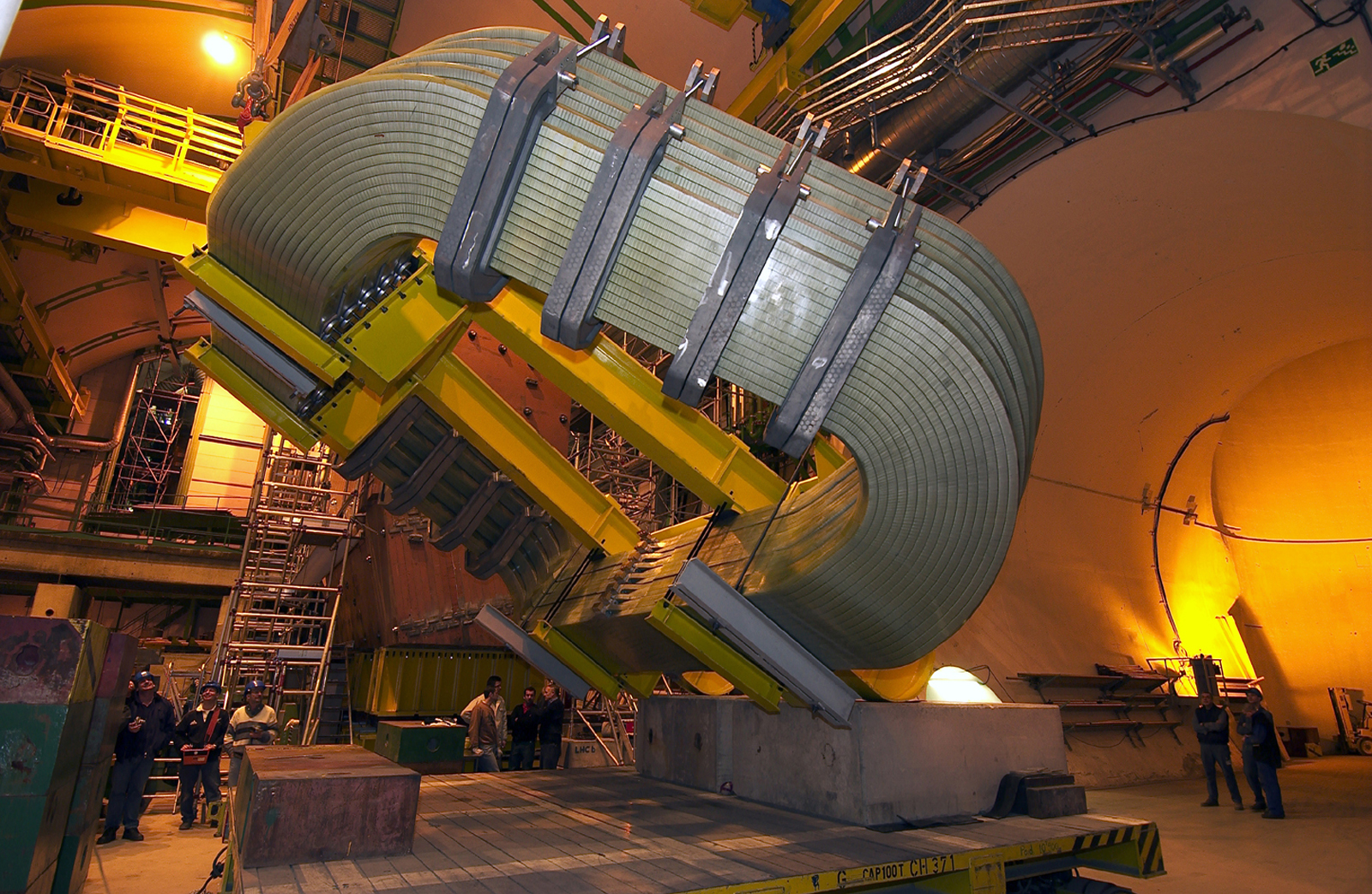Taking a closer look at LHC
| LHCf (LHC forward) experiment is placed on either side of the ATLAS experimentcan accurately measure the number and energy of neutral pions and other particles forward direction in ATLAS collisions. about 140 meters from the interaction point at a zero degree collision angle. Their two detectors, made of tungsten plates and plastic scintillators, produced in the |  |
The aim of LHCf experiment is the study at the LHC accelerator of the neutral-particle production cross sections in the very forward region of proton-proton and nucleus-nucleus interactions.
Neutral pions, gammas and neutrons production will be investigated during the initial phaseof the LHC running, at low luminosity (below 1030cm-2s-1).
This study will give important information for understanding the development of atmospheric showers induced by very high energy cosmic rays hitting the Earth atmosphere. Methods which are used to extract information about primary cosmic-ray radiation by means of atmospheric-shower experiments data, depend on the interaction model which is considered in shower development simulations. Using the statistics which can be accumulated in a few hours of data taking, LHCf will be able to check the validity of several interaction models' predictions in proton-proton interaction at an equivalent energy of 1017 eV in the laboratory frame. Kinematical region accessed by the experiment can be improved during non-zero beam crossing angle runs and by moving the LHCf detectors with respect to their initial position by means of a remote control system, in such a way that different forward regions can be covered at different times.
The two electromagnetic calorimeters, placed 140 metres upstream and downstream of IP1 (ATLAS), consist of a scintillator-tungsten sandwich .Total outside dimensions of one calorimeter are 10cm x 30cm x 90cm A schematic is shown.

These measurements, together with the measurement of the total inelastic cross-section (TOTEM), are of paramount importance for our understanding of Ultra High Energy Cosmic Rays atmospheric shower development.
LHCf is the smallest one of the six official LHC experiments, and it has an equally small collaboration of just 22 people from 10 institutes in 4 countries.
|
AUTHORS Xabier Cid Vidal, PhD in experimental Particle Physics for Santiago University (USC). Research Fellow in experimental Particle Physics at CERN from January 2013 to Decembre 2015. He was until 2022 linked to the Department of Particle Physics of the USC as a "Juan de La Cierva", "Ramon y Cajal" fellow (Spanish Postdoctoral Senior Grants), and Associate Professor. Since 2023 is Senior Lecturer in that Department.(ORCID). Ramon Cid Manzano, until his retirement in 2020 was secondary school Physics Teacher at IES de SAR (Santiago - Spain), and part-time Lecturer (Profesor Asociado) in Faculty of Education at the University of Santiago (Spain). He has a Degree in Physics and a Degree in Chemistry, and he is PhD for Santiago University (USC) (ORCID). |
CERN CERN Experimental Physics Department CERN and the Environment |
LHC |
IMPORTANT NOTICE
For the bibliography used when writing this Section please go to the References Section
© Xabier Cid Vidal & Ramon Cid - rcid@lhc-closer.es | SANTIAGO (SPAIN) |



